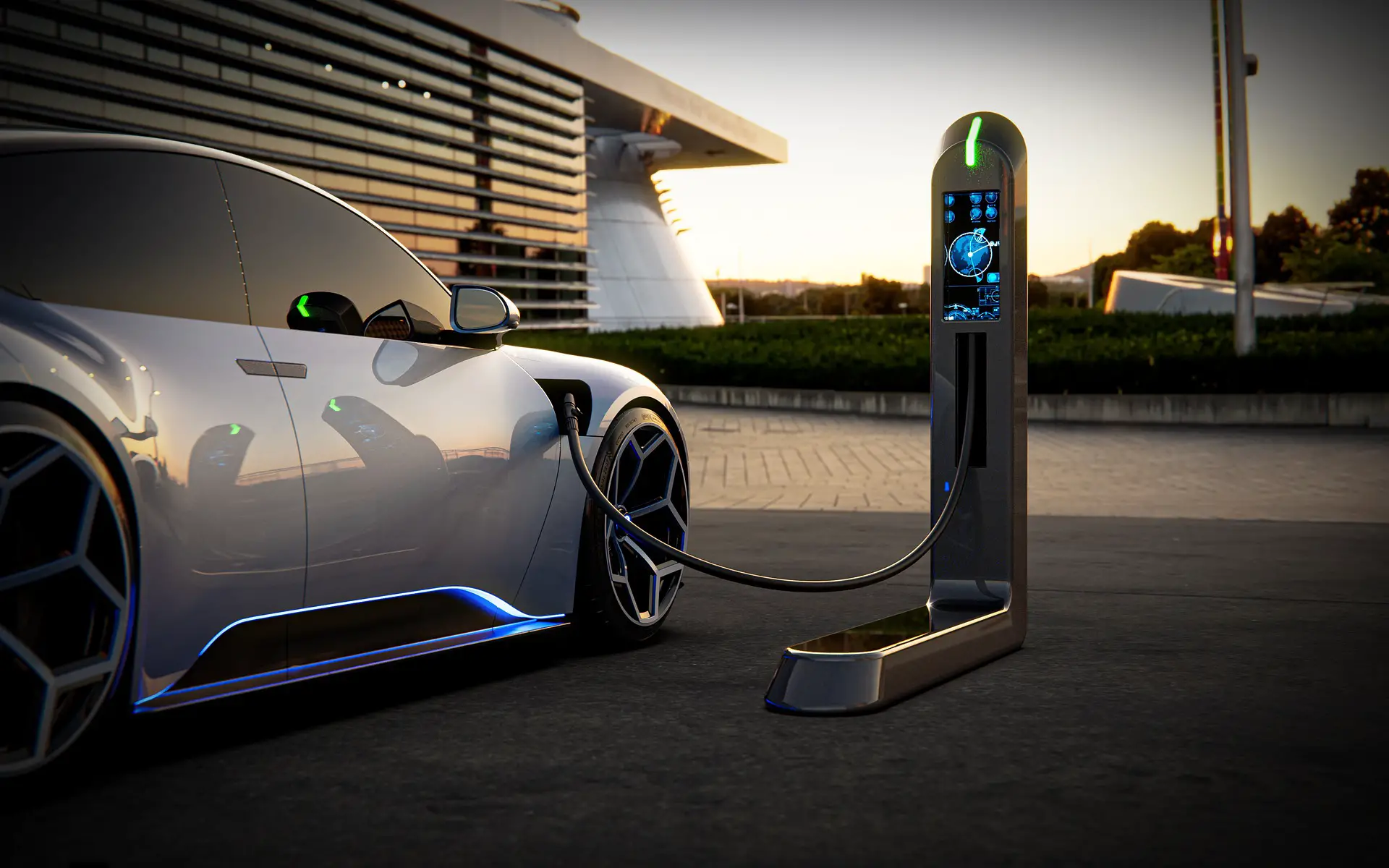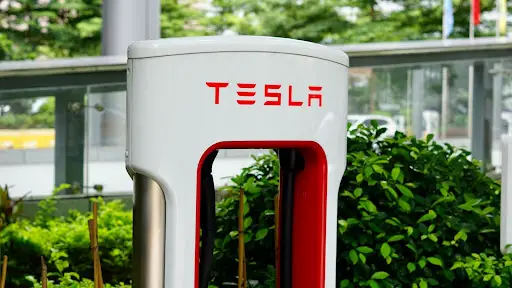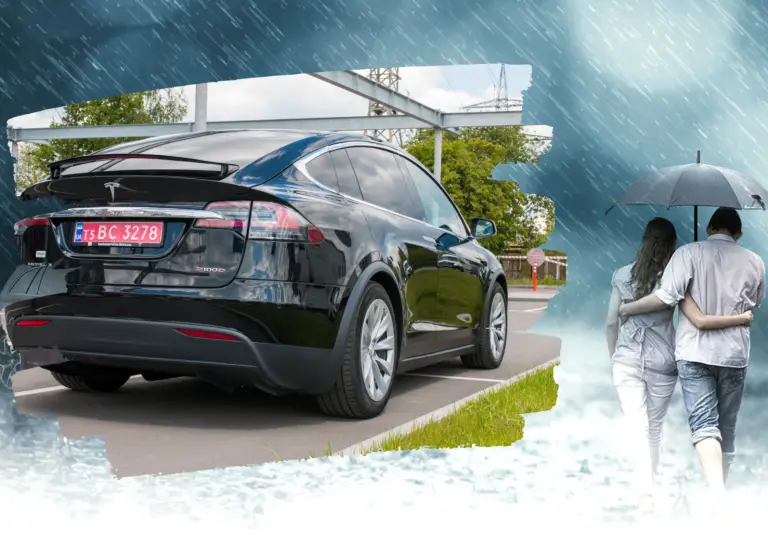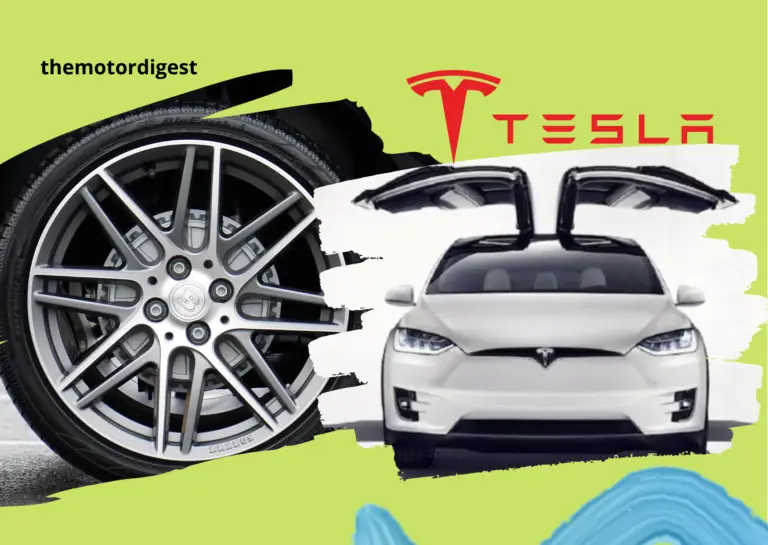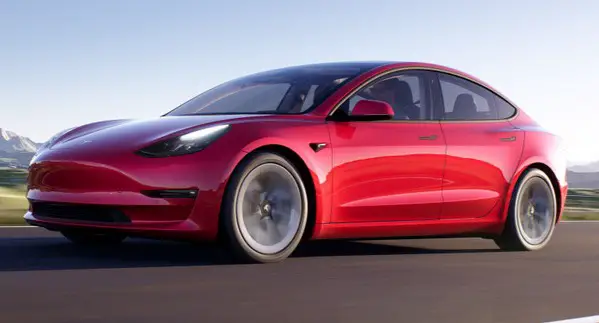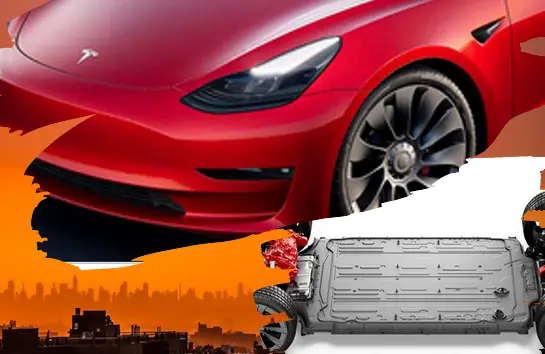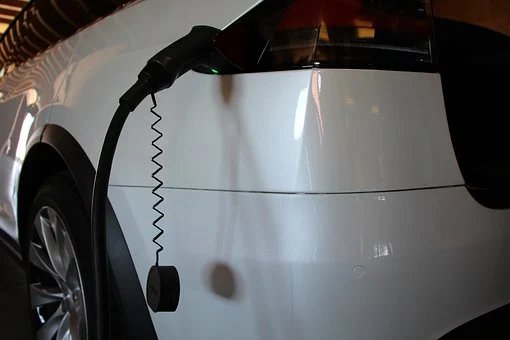Can You Charge A Tesla Outside?
We have always been taught to be very cautious when using electricity under conditions that are not fully controlled. The dangers were forced home to most of us and have developed into a healthy respect for the benefits and risks to electrical appliances.
It is safe to charge your Tesla outside, even if it is pouring with rain. When you insert a charging plug into the Tesla socket, the Tesla and Tesla charger unit carries out a “handshake” protocol before activating the circuit. If water has entered the system, the charger won’t provide current.
With the massive take-up of Electric Vehicles and Tesla’s in particular, it is essential that we actively push back against fake news involving the safety of this transportation method. When you buy a Tesla, you must ensure you have the necessary infrastructure to support the vehicle.
Table of Contents
- You Can Charge A Tesla Outside – Here’s How
- There are Three Levels of Tesla Chargers to Use Outside
- If You Charge A Tesla Outside, Take Security Precautions
- Conclusion
You Can Charge A Tesla Outside – Here’s How
If driving a Tesla was any more dangerous than a conventional internal combustion engine-powered car, they would never be able to grow their market share the way that they have.
The electrical equipment in a Tesla is sealed and does not allow water or physical contaminants to ingress.
The regulation to which all Teslas conform requires the vehicle’s battery to remain completely watertight for at least 30 minutes if the Tesla is submerged in water that is 1 meter deep.
Tesla Battery Charges Can Be Outside in Very Wet Conditions
There are three levels of chargers for a Tesla.
Tesla chargers conform to The National Electrical Manufacturers Association (NEMA) standards and must meet the code “NEMA 3R”. It means they must be engineered for outdoor or indoor use and protect against the formation of ice, rain, snow, sleet, and dirt around the enclosure.
Although many Tesla owners install their Tesla Wall Chargers in their garage, they are perfectly safe to use outside in the rain or inclement weather.
The Tesla Wall Connector, used for both Level 1 and Level 2 chargers, is waterproof and can be installed inside a fully enclosed garage or lean-to or even outdoors for owners without a garage.
If the vehicle to be charged is outside, the charger is usually mounted on the house wall.
Despite how vulnerable it may make you feel, it is even safe to connect the charger to your Tesla when it is pouring rain. The connector is designed to prevent water from entering the plug, as is the Tesla’s socket.
While plugging the charger in, even if the plug point is turned on and the charger is “live,” there is still no danger, as the charger will not open the circuit until it has finished a handshake with the car’s computer.
If water has been inadvertently allowed to enter the system, the car’s computer will recognize this and not allow the charger to activate.
The only times you need to exercise some caution is:
If the Outside Tesla Charger Plug Has Been Left in A Puddle
Even though it is designed to prevent the ingress of water, there is no point in carrying on without first making sure that it is sufficiently dry.
As discussed earlier, in the improbable event that the plug has become waterlogged, the vehicle won’t authorize the charge.
If the Outside Tesla Charger Plug is Damaged
If the charger plug has been damaged (perhaps being run over by the Tesla wheel?), you should not attempt to use it, irrespective of the weather.
The fact that a damaged casing may have permitted water ingress is also a good reason to get it repaired before you use it again.
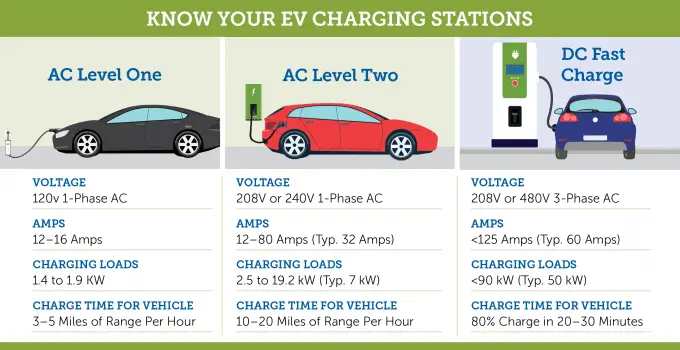
There are Three Levels of Tesla Chargers to Use Outside
There are three levels of Tesla chargers, from the most basic units supplied with the Tesla to Tesla superchargers.
Level 1 Tesla Chargers Can Be Used Outside
Level 1 is the most basic charger and is the model generally provided with the car.
Level 1 uses standard home 120-volt power and takes between 20-40 hours (depending on the model Tesla) to charge the car.
You can use the Tesla Level 1 charger outside in any weather conditions.
Level 2 Tesla Chargers are Safe to Use Outside
Level 2 chargers are entirely safe to use outside.
These chargers use 240 volts and can recharge an EV in a couple of hours. Most homes that run on 120 Volt current have a few plugs which supply 240-volt current for high-consuming electrical equipment – such as the stove.
If you have a 240-volt outlet in the garage or near the point where you want to install the external Tesla charger, you are good to go.
If not, the power outlet should be installed by a professional electrician.
Level 3 Tesla SuperChargers Are Always Outside
Level 3 (DC Fast Charging, Tesla Supercharging) can charge a typical Tesla in an hour or less. They are installed at public gas garages or dedicated charging stations.
Level 3 chargers use a lot more power from the electrical utility (480+ volts and 100+ amps); their output matches the name “super.”
Even though level 3 chargers are installed in public areas and may include a shelter, this is more for the customer’s protection from the elements than keeping the vehicle or charger protected.
If You Charge A Tesla Outside, Take Security Precautions
If the crime problem does not affect you, count your lucky stars and skip this section.
If you stay in a country or area where crime is a problem, you should take sensible precautions to protect your vehicle and external charger.
The precautions do not need to be excessive, but it is always better to be safe than regretful.
Survey Your Tesla Outside Charging Station
Install cameras and movement detectors (unless you have dogs) to monitor the charging equipment. If you have dogs, they probably already provide a movement detector alarm!
With an area detection system, you can be warned that there is movement at the station, which you can check with a camera.
If you see something suspicious, don’t confront the individual(s) but contact the police or your security company to come and check it out.
Protect the Area Where Your Tesla and Charger are Located
Install a lock on the gate leading to the road. If the gate is powered by an electric gate motor, investigate antitheft systems to protect the gate motor and prevent it from being opened.
If you think this is alarmist, on the 10th November 2021, two Tesla Model S cars in two separate towns (Frogner and Jessheim, near Oslo in Norway) were simultaneously stolen and driven off their owner’s driveways without the use of the keys.
Check the Street When You Come and Go
Although you don’t want to be so paranoid that you are always afraid of danger, don’t ignore a potential problem and not exercise the most straightforward security practices.
Most hijackings happen near home, so slow down before you reach your home and quickly scan your home’s road boundary when you arrive.
Check for vehicles you don’t recognize (particularly vans with no side windows) or for people loitering that you don’t remember.
These will generally be completely innocent; however, there is no harm in preparing and keeping your pepper spray handy.
Conclusion
It is perfectly safe to charge your Tesla outside. The fake news about people being electrocuted or cars bursting into flames when Tesla’s are recharged in the rain has no basis. The Tesla itself has superior water protection, and all the ancillary charging equipment is similarly protected.
Although it takes longer to charge a Tesla than fill the petrol tank of a conventional car, an EV is superior in almost every other metric.
Amazon and the Amazon logo are trademarks of Amazon.com, Inc, or its affiliates.

